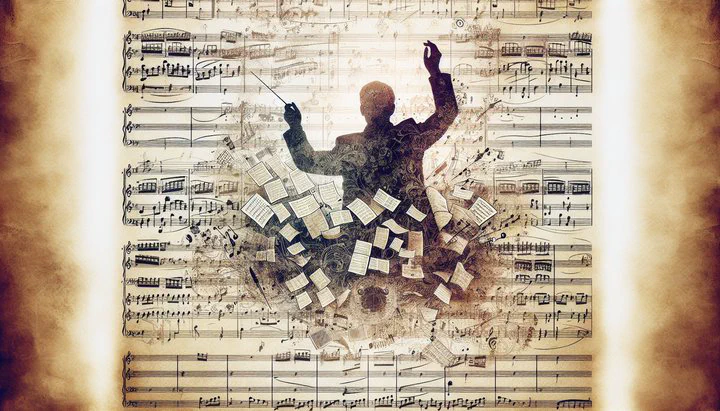Discover Multiple Versions of Hoffmann Score

Introduction to the Hoffmann Score
Welcome to the magical world of Les Contes d’Hoffmann, an opera by Jacques Offenbach. This opera, which means “The Tales of Hoffmann,” is a journey through stories by the poet E.T.A. Hoffmann. But did you know there are multiple versions of the Hoffmann score? You might ask, why is that? Offenbach passed away in 1880 before finishing the opera. This meant others had to step in and complete it. Each person had their own ideas, leading to different versions of the score.
These versions can change how the opera feels. For musicians and educators like you, this is both a challenge and a chance to explore. You can decide which version speaks to you and your audience. So, as you dive into Les Contes d’Hoffmann, remember the rich history behind its many versions.
The Placement of the Barcarolle
One of the most enchanting pieces in Les Contes d’Hoffmann is the Barcarolle, a beautiful duet that has charmed audiences for generations. Originally, it was meant to be in the middle of the opera. But the placement of the Barcarolle has varied across the multiple versions of the Hoffmann score. This piece was first intended to open the third act, set in Venice. But in some versions, it starts the opera, setting a magical tone right away.
This early placement can captivate you immediately, drawing you into Hoffmann’s world. On the other hand, putting it later offers a serene moment amid the drama. The multiple versions of the Hoffmann score show how the Barcarolle’s placement changes the opera’s emotional journey.
For musicians and educators, exploring these different placements is a rich opportunity. As you experiment with the various versions, think about how each placement changes the mood and message of the opera. This exploration not only deepens your appreciation for Offenbach’s work but also hones your ability to convey emotion through music.
Notable Recordings: 1972 with Joan Sutherland
One of the most celebrated recordings of Les Contes d’Hoffmann is the 1972 recording with Joan Sutherland. This version stands out for its rich interpretation and remarkable performances. Joan Sutherland, known for her powerful voice, brings unique depth to the role of the heroine. Her portrayal captures the complex emotions in the opera, making this recording a favorite for many.
This recording is not just about Joan Sutherland; it also features a talented ensemble and a thoughtful approach to the opera’s multiple versions. Conducted by Richard Bonynge, this recording is a cohesive interpretation of the score. It offers a fresh perspective on the beloved opera. For musicians and educators, this recording provides an excellent example of how to interpret the multiple versions of the Hoffmann score with passion and precision.
If you’re exploring Les Contes d’Hoffmann, listening to this recording can deepen your understanding. Pay attention to the Belle nuit lyrics and the placement of the Barcarolle, as these elements bring unique character to the piece.
Understanding the Belle Nuit Lyrics
In Jacques Offenbach’s Les Contes d’Hoffmann, one of the most memorable pieces is the duet “Belle nuit, ô nuit d’amour,” often referred to as the Belle nuit lyrics. This enchanting piece is performed during the opera’s third act, set in Venice. The song’s gentle melody and poetic words have captivated audiences for generations.
The Belle nuit lyrics speak of the beauty and magic of the night, celebrating love and the enchanting atmosphere it creates. This song is often sung by the characters Giulietta and Nicklausse. Its dreamy quality perfectly complements the Venetian setting, enhancing the romantic mood of the scene.
For musicians and educators, delving into the Belle nuit lyrics provides an opportunity to appreciate the interplay between text and music. Understanding the meaning behind the words helps performers convey the full emotional depth of the piece. As you engage with Les Contes d’Hoffmann, reflect on the impact of the Belle nuit lyrics. Consider how their placement within the opera’s multiple versions can change the audience’s experience.
The Impact of Multiple Versions on Performance
When performing Les Contes d’Hoffmann, the existence of multiple versions of the Hoffmann score presents both challenges and exciting opportunities. Each version offers a unique take on Offenbach’s opera. But how do these variations affect performances, and what should you consider when choosing a version?
The choice of which version to use can significantly impact the storytelling and flow of the opera. Directors and performers need to decide which elements to emphasize. Understanding these differences helps performers convey the story in a way that resonates with the audience.
For musicians, navigating the multiple versions of the score means being adaptable. Each version might present different musical challenges, like changes in orchestration or variations in the placement of the Barcarolle. Embracing these differences can enhance your skills.
Educators can use the multiple versions as a teaching tool. By comparing and contrasting the versions, students gain a better appreciation of how artistic choices influence a performance. This exploration can spark creative thinking and encourage young musicians to develop their own unique style.
Ultimately, the multiple versions of the Hoffmann score are a testament to the opera’s enduring appeal. Whether you’re a performer, educator, or enthusiast, embracing these variations allows you to contribute to Offenbach’s legacy. So, the next time you approach Les Contes d’Hoffmann, consider how your interpretation of the score can bring new life to this timeless masterpiece.
Call to Action
Ready to explore Les Contes d’Hoffmann yourself? Listen to a recording, share your interpretations in our comments section, or join a community discussion. Dive into the opera and discover which version resonates with you!